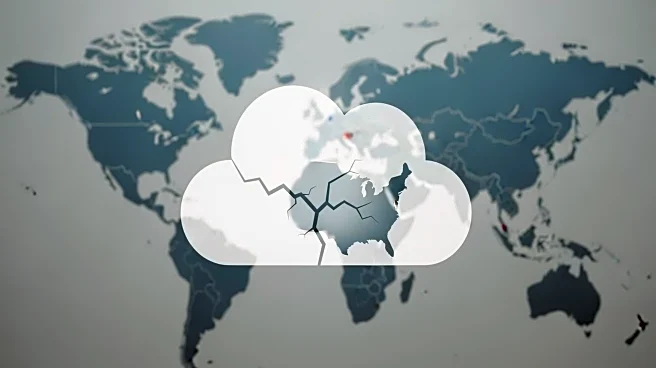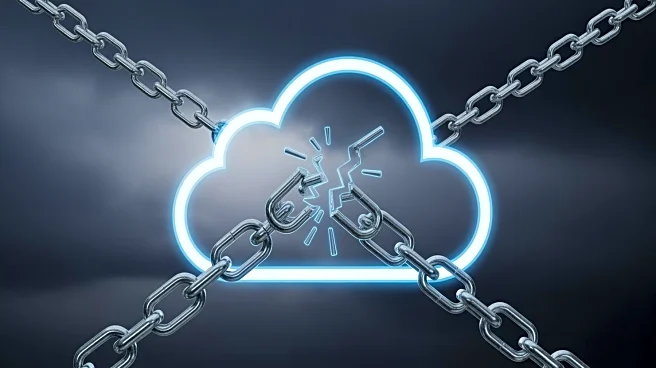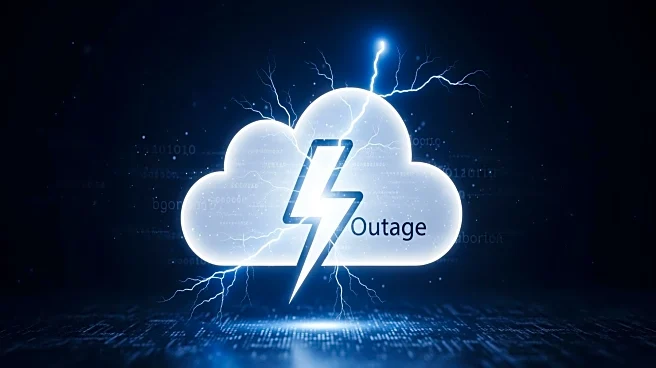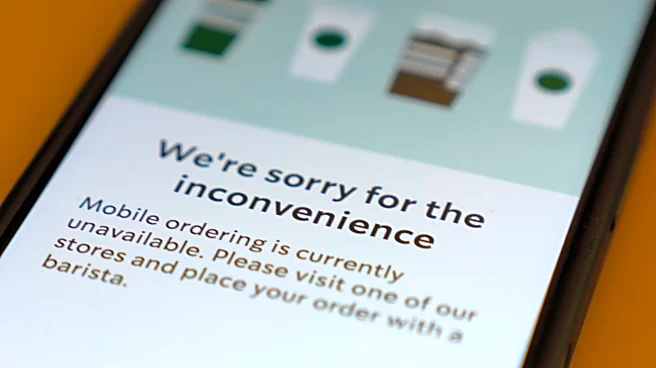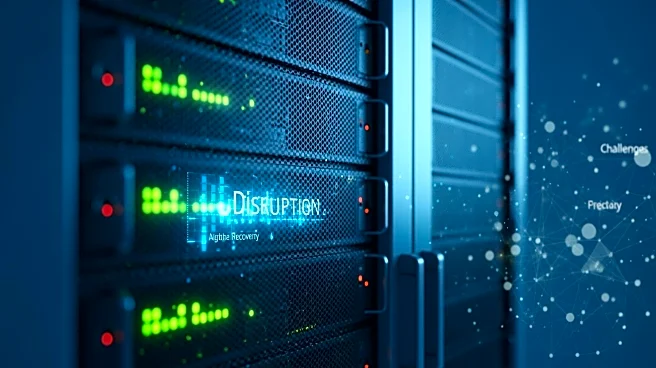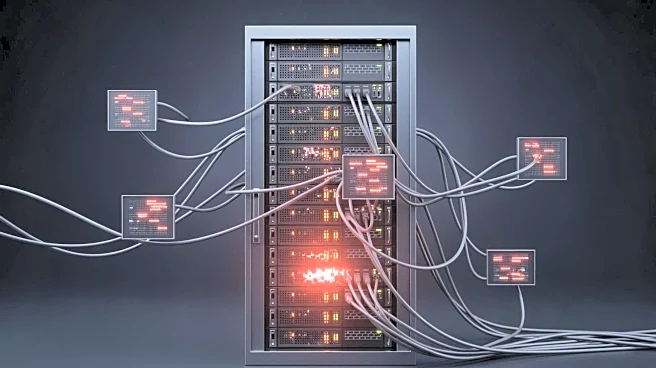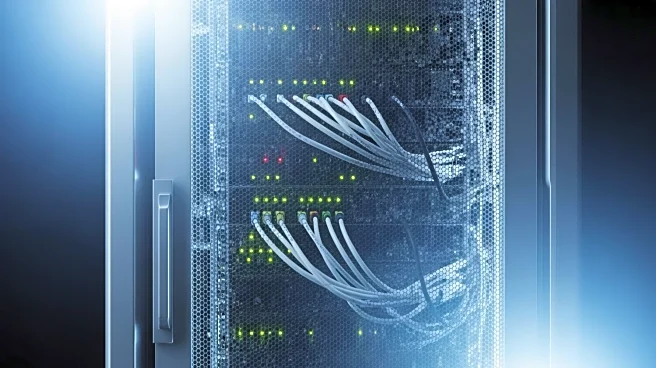What's Happening?
Amazon Web Services (AWS) experienced a significant outage affecting its US-East-1 region, which led to widespread disruptions across various online services. The outage began at 11:49 p.m. on Sunday and
was resolved by 3:01 p.m. on Monday. The issue was attributed to DNS resolution problems impacting regional DynamoDB service endpoints. Over 2,000 companies, including social networks, streaming services, and online banking platforms, were affected. AWS's reliance on a small number of data centers in northern Virginia underscores the vulnerability of internet infrastructure when concentrated in specific locations.
Why It's Important?
The AWS outage highlights the dependency of many online services on a few major cloud providers. This incident demonstrates the potential risks associated with centralized internet infrastructure, where a single point of failure can lead to widespread service disruptions. Businesses and consumers alike are affected, with potential financial losses and operational challenges. The outage serves as a reminder of the importance of diversifying cloud service providers and implementing robust contingency plans to mitigate such risks.
What's Next?
As AWS services return to normal, affected companies will likely review their cloud strategies to prevent future disruptions. There may be increased interest in distributing workloads across multiple cloud regions to enhance resilience. Additionally, AWS and other cloud providers might invest in improving their infrastructure to prevent similar incidents. Stakeholders, including businesses and cybersecurity experts, will continue to monitor the situation for any signs of vulnerabilities that could be exploited in future outages.
Beyond the Headlines
The outage raises questions about the cybersecurity implications of technical failures. While no evidence suggests a cyberattack caused the AWS outage, such incidents can create opportunities for malicious actors to exploit vulnerabilities. Companies must remain vigilant against phishing attacks and other scams that may arise during periods of service disruption. The event underscores the need for comprehensive security measures that protect against both technical and cybersecurity threats.
